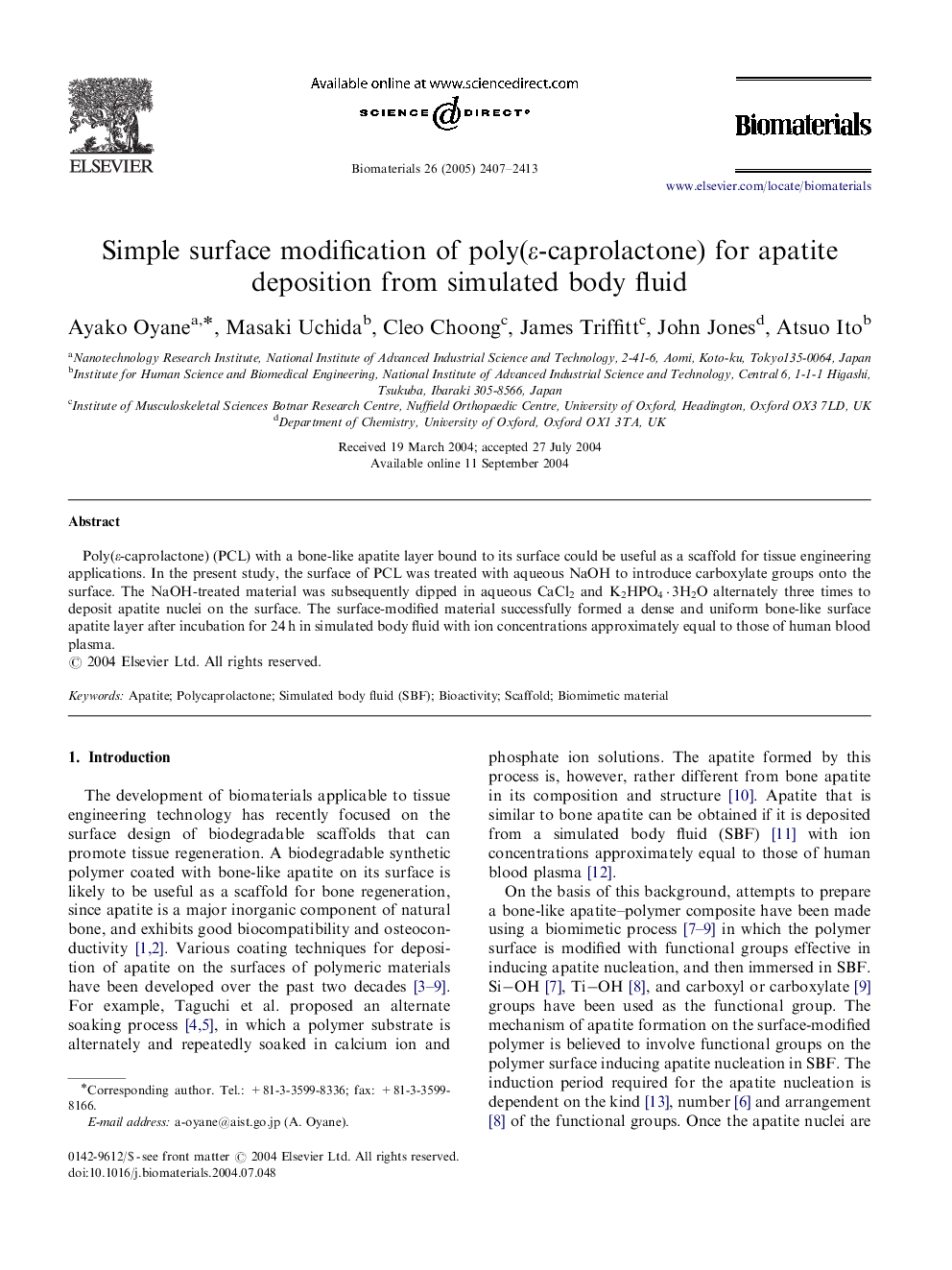| Article ID | Journal | Published Year | Pages | File Type |
|---|---|---|---|---|
| 12808 | Biomaterials | 2005 | 7 Pages |
Abstract
Poly(ε-caprolactone) (PCL) with a bone-like apatite layer bound to its surface could be useful as a scaffold for tissue engineering applications. In the present study, the surface of PCL was treated with aqueous NaOH to introduce carboxylate groups onto the surface. The NaOH-treated material was subsequently dipped in aqueous CaCl2 and K2HPO4·3H2O alternately three times to deposit apatite nuclei on the surface. The surface-modified material successfully formed a dense and uniform bone-like surface apatite layer after incubation for 24 h in simulated body fluid with ion concentrations approximately equal to those of human blood plasma.
Related Topics
Physical Sciences and Engineering
Chemical Engineering
Bioengineering
Authors
Ayako Oyane, Masaki Uchida, Cleo Choong, James Triffitt, John Jones, Atsuo Ito,
